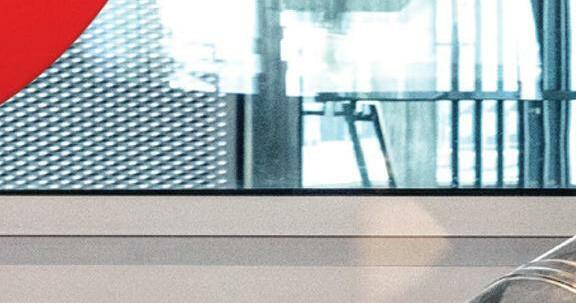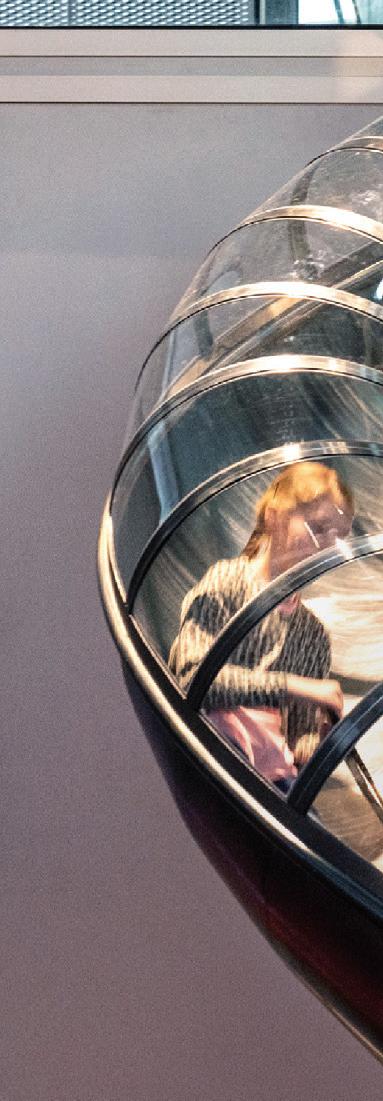






It can take a fair bit of explaining to reason why the year’s tenth month includes the Latin word for eight in it.
You got lumbered again, didn’t you? ‘She who must be obeyed’ is the one having the holiday … at work.
Meanwhile, at home, the kids won’t sit still and watch Net ix like they’ve been told.
Fortunately, there’s a world of opportunity out there, and we implore you to read on, as these pages are crammed with recommendations for how you might survive the Children’s Autumn Holiday.
Whether it’s sheer unadulterated fun or enriching your children’s appreciation of the arts, we’ve got you covered!
October can be a confusing one for children – particularly those with an understanding of a second or even third language.

But then again, March is named after a chocolate bar and smack in the middle of Lent most years.
Maybe you’re better o teaching them the Anglo-Saxon months and introducing them to ‘Game of Thrones’ – so nearly Net ix, but close – as the heavy axe brigade knew October as ‘Winterfylleth’, which explains why that family’s motto is ‘Winter is Coming’.
Own the outdoors!
Inbuilt into that urgency is the will to defy the weather gods and celebrate one last hurrah before the clocks go back to darken our late-afternoons for the foreseeable.
Culture Night (Page 7), celebrated on the very day this publication hits the streets, is a call to defy the sombre sunset and own the night. For just 110 kroner, a transport pass hands you the keys to the city – let’s just hope that
you and your brood take better care of it than Ramsay Bolton.
But if that doesn’t rattle your call for the wild, you can always opt for one of our Old Favourites (Pages 8-11), whether it’s a trusty themepark such as Tivoli or Bakken, or a brush with the exotic among the pandas of Copenhagen Zoo or on the snowy slopes of Copenhill.
Our Outside the Capital section (Pages 1213) will also freshen you up with trips to the Forest Tower, Kronborg Castle or Knuthenborg Safaripark, or a mission to seek out The Hidden Giants, while our guide to the national park of Skjoldungelandet (Page 14) will hopefully introduce you to wonders you’ll end up revisiting time and time again.
But just like the Winter Half-Term, which next year will last from February 10-19, there are plenty of options for the King’s Landing brigade more suited to indoor pursuits – the allure of a walk of shame or getting cremated
by dragon re don’t exactly sell leaving your at, after all.
Combining a visit to a museum or gallery (see Page 4) with your children undertaking an art class, often in which themes touched on by the exhibitions are included, can be a wonderful way for di erent generations to enjoy what is essentially the same subject matter.
Likewise, shows like ‘Bugsy Malone’ (see Page 6) will always have universal appeal – Rearview Theatre has spared no expense reproducing the splurge guns and fantastic Prohibition Era costumes of the original 1970s movie.
Or revisit Pages 8-11 for details of indoor activities at the likes of the Viking Ship Museum, Danish Architecture Center, Blue Planet and Experimentarium.
Wherever you go, your kids will be challenged, which is good news when you’re feeling lumbered, as they’re far less likely to grill you about why October has got an eight in it.






In autumn, the Vikings returned from their voyages to distant shores. The ships were pulled ashore - and animals and people prepared for the long, cold winter.
At the Viking Ship Museum we gather around the fire to hear riveting taless about the old Norse gods...

Under the age of 18



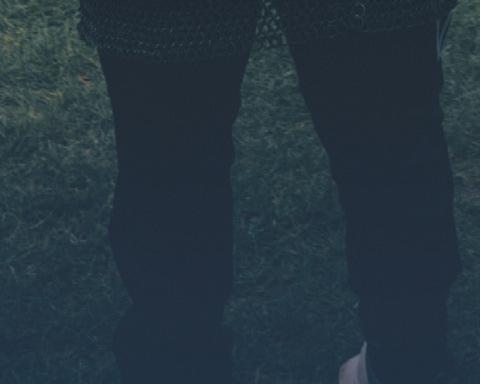
Have you seen ’Mission Valhalla’ on DR-Ramasjang?













Join the Viking Ship Museum’s Mission Valhalla




The lost courage of Tyr’ every day during the autumn holidays.







Historically good experiences and activities for the whole family

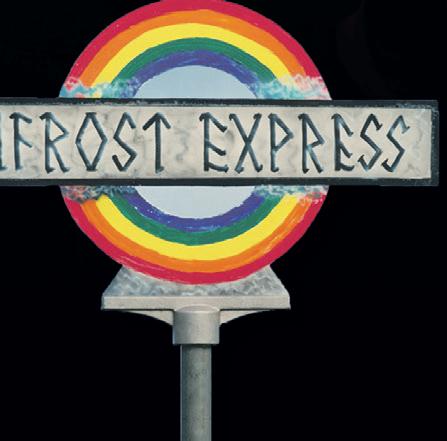






With so many highly regarded art museums in Copenhagen of every genre and variety, there are plenty of opportunities to get your child painting and creating this autumn halfterm in a fun and concentrated environment, instead of on your walls.



The Louisiana Museum of Modern Art (Gammel Strandvej 13, Humlebæk) will be o ering workshops in the children’s wing free for young people under 18, from Tuesday through Sunday, open from 11:00 to 17:00. The workshops are designed around current exhibitions.
The workshops take inspiration from modern art masters such as Alex Da Corte, Yves Klein and Henry Heerup and explore many di erent artistic mediums.
Where better then, for your child to explore their creativity through the power of paint, clay and colour?
This autumn holiday, SMK (Sølvgade 48-50, Cph K) invites all prospective artists to attend its daily Børnenes værksted sessions. The children will have plaster, fabric, paint, clay, crayons and glue guns at their disposal to activate their senses and creativity.
Over the course of the ‘Keramik: FamilieVærksted’ class, children get to shape characters, animals, cups, owers, whatever they want, as their imagination runs free. Absalon’s potters will teach, guide, give advice, lend materials, and take care of the ring and glazing.
However, in order to make it to the kiln, the ceramics will need to meet a certain standard. You’ll want to get your tickets soon as the rst Saturday has already sold out! Find the classes on the third oor; no onlookers!
This autumn holiday Arken (Skovvej 100, Ishøj) is hosting a workshop aimed at children aged 7 to 12 that will allow its participants to learn about and be inspired by Leonora Carrington, the subject of one of its latest exhibitions.

Open until October 23, the Natural History Laboratory is an interactive area in the Zoological Museum (Universitetsparken 15, Cph K) at the Natural History Museum.
“We fuel the ames burning inside of us: the re that is all about the joy of working creatively with the imagination. Here, the imagination is allowed to beat out the reason for a change,” explained Michael Hansen, the head of the workshop for more than 20 years.
This year’s workshop will centre around the subject of the museum’s newest exhibition: ‘Matisse’.
Every Saturday, beginning October 15 until December 17 with the exception of October 29, families are invited to learn everything you need to know about producing your own ceramics at Folkehuset Absalon (Sønder Boulevard 73, Cph V).

For only 40 kroner your child can learn, play and create in Carrington’s mystical world of magic and mythology. Tickets are going fast but are still available from Wednesday October 19 through to Saturday.
Children are given the opportunity to study and handle a collection of skulls, take a closer look at exotic insects under a microscope, and create their own drawings inspired by the animals in the museum around them. Entrance to the laboratory is included with entrance into the museum.
If your kid loves to build then they will love the Lego workshop being put on by the Danish Architecture Center (Bryghusgade 10, Cph K) this autumn holiday.
After learning a bit about space, architecture and space architecture, your child will have to think outside the box and build a home out of Lego that could make the moon inhabitable.
The workshop runs from October 15-23.
Experience a world under the seven seas and enjoy a close encounter with majestic hammerhead sharks and elegant rays at Northern Europe’s largest and most modern aquarium.

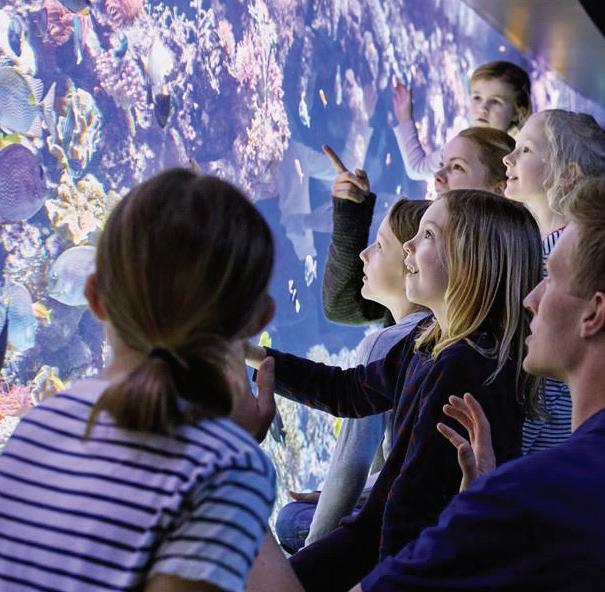


primed to ooh and aah, the way the audience does for a chimp on the Carson show,” she further observed.
But the world has moved on since Kael’s era of children being seen but not heard.
our lives since its debut nearly 50 years ago, can be enjoyed regardless of the language.
Pauline Kael was the most famous lm critic of the 20th century. But even she made a few mistakes.
Unlike most musicals of the post-war years, ‘Bugsy Malone’ arrived on our screens in 1976 untested on Broadway or West End audiences.
Its novel approach to a Prohibition Era hoodlum story to only feature child actors, and replace Tommi guns with custard pies, was completely lost on Kael, who laughed it o as “nothing but its godawful idea”.
“We’re not watching actors in a story, we’re watching kids doing a stunt, and so we’re
They became consumers (thanks George Lucas), got rights in the classroom (ditto Pink Floyd) and got thoroughly mollycoddled in the process (combo of threat of paedos, social media and the lm ‘Richie Rich’).
Today, parents blister their thumbs lming their loved ones making us go ooh and aah, so we can go ooh and aah, at our hearts’ content, forever.
And ‘Bugsy Malone’, unashamedly now Pauline is long dead, is the ultimate ooh, ah musical.

There is no language barrier to such sentiment, and that’s why a forthcoming Rearview Theater production of ‘Bugsy Malone’ this autumn halfterm holiday, featuring a superb songbook by Paul Williams that has more than penetrated
At Musikteatret Albertslund, a professional nine-piece live band will help in that department too – a huge priority for British co-director Russell Anthony-Collins and his partner-in-crime Christina Anthony, who together own the SceneKunst theatre school.
The band consists of some of the best musicians in Copenhagen. Together they share a broad range of experience in musical theatre as well as jazz, pop, rock and classical music.
Many of them have played in large theatre productions at Folketeatret, Det Ny Teater, Det Kongelige Teater and Østre Gasværk. Others have toured with Langkjær Entertainment and Heltemus Productions.
The band is led by drummer and percussionist Mikkel Schnettler who has been working closely with Rearview for many years.
For Anthony-Collins, a Londoner born in the early 1970s, ‘Bugsy Malone’ is a musical that made a big impression on his early life.
“If you are around my age and raised in the UK, then ‘Bugsy Malone’ would have permeated your childhood in the same way as Sunday roast dinners or ‘knock down ginger’ might have. We all grew up knowing the lm and all the characters inside and out,” he recalls.
“It gives me great pleasure to be directing this great musical here in Denmark. We have assembled a fantastic cast of talented youngsters, many who have already had a great deal of professional experience. We believe young actors given the opportunity can create work every bit as good as anything else you might see in the theatre. We hope together we have achieved this and invite you to join us, to see our production this autumn holiday. And that you love ‘Bugsy Malone’ as much as we do.”
And remember: we ooh and aah in every language.
Friday Oct 14, from 18:00; city-wide; under-12s: free adm to all events, over-12s: 110kr pass grants access to all events, purchase via kulturnatten.dk, all 7-Elevens, museums and libraries
Now in its 28th year, the celebration will see more than 250 museums, theatres, libraries, churches, ministries, parks and squares lay on special events for the public in the city’s largest annual one-day event.
There’s a veritable smorgasbord of happenings, from the inner city to Valby, Frederiksberg, Østerbro, Vesterbro, Nørrebro, Nordvest, Islands Brygge, Amagerbro and Christianshavn.
Take guided tours of Parliament, the Supreme Court, or the home of media giant DR.
Immerse yourself into the world of the iconic Copenhagen Opera House with a peek
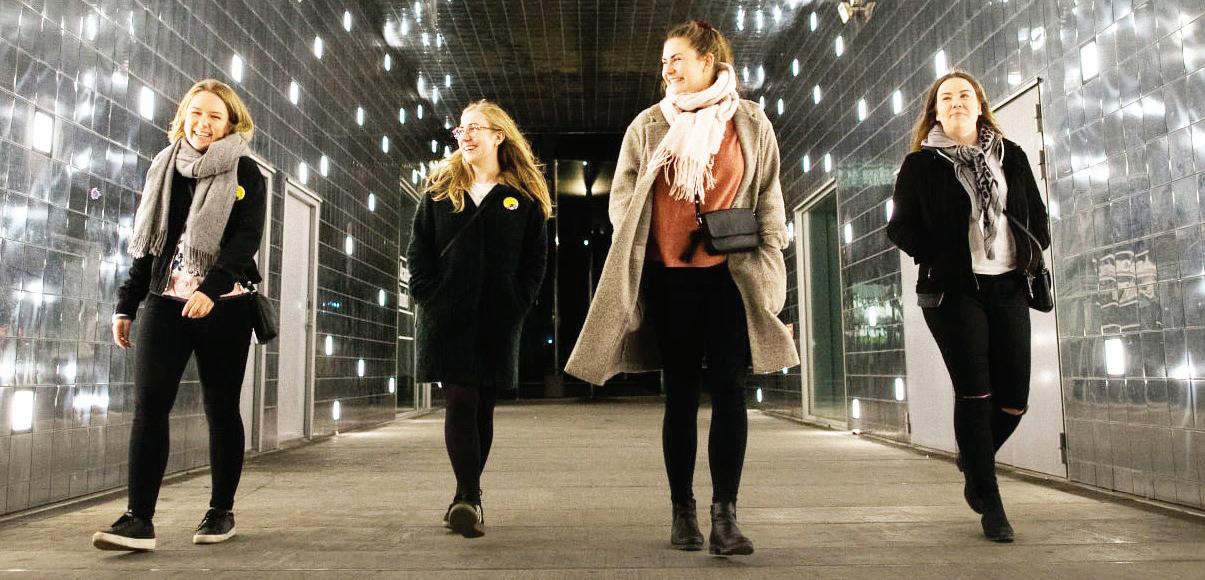
backstage, or for frights, go subterranean at Cisternerne in Søndermarken and let Chiharu Shiota’s cobweb-like yarn structures make you feel you’re on the set of a Tim Burton movie.
Or would you rather unwind with something a little more … introspective? How about a ve-hour meditation accompanied by ambient electronic music at Brorsons Kirke in Nørrebro?
‘ChurChill’ has you covered.

One pass to rule them all Without exaggerating, there’s truly something for everyone and a ‘Culture Pass’ – like a onenight skeleton key – gets you access to the whole lot.

But whatever your plans are, navigating the hordes will take some foresight – expect fully-booked restaurants city-wide and sardine-can public transport rides (the Culture Pass gets you free bus, train and Metro rides from 16:00-04:00 too).
Go exploring. Dig through the o erings and pick up a Culture Pass at kulturnatten.dk. (LH)
Roskildevej 32, Frederiksberg; open daily 09:00-17:00; over-12s: 209kr, under-12s: 119kr, zoo.dk
Copenhagen Zoo will be open for the entire autumn break and o er many special activities, such as meeting a zookeeper, watching shows and attending a feeding session.
Last year, Tourscanner named Copenhagen Zoo as the 33rd best on the planet, drawing particular attention to its Elephant House, which was designed by famous British architect Norman Foster.
Vindmøllevej 6C, Cph S; open Mon-Fri 12:00-20:00, Sat 10:0020:00, Sun 10:00-18:00; children: 105kr per hour, adults: 150kr per hour; copenhill.dk
An architecturally unique destination for an active family, Copenhill calls itself “Copenhagen’s epicentre of urban mountain sports” – and for good reason.

At an altitude of 85 metres towering above the Øresund, hundreds of thousands have taken the chance to ski and snowboard down the huge slope, which is divided into di erent levels to enable support for a wide range of abilities, since its opening in December 2018.
The centre also includes the largest climbing wall in the world. At 85 metres tall and 10 metres wide, it’s a challenge: both to climb and to convince anyone to give it a go.
Times at Copenhill should be booked online in advance on its website. (MEY)
That isn’t the only must-see enclosure at the famous zoo – or one built by a celebrity architect for that matter – which is located a little outside the city centre, at the top of one of the steepest hills in the whole capital, where it overlooks the wonderful Frederiksberg Have park.
The panda house is designed by the famous Bjarke Ingels Group in the shape of a Yin-Yang symbol and pressure has been mounting on residents Xing Er and Mao Sun to mate, now fully four and a half years since they moved
to the new premises.
In April, ‘Panda-monium’ reigned at the zoo as thousands turned out to see if they would copulate. Female pandas only ovulate once a year, which means the window for impregnation is barely 40 hours!

The hippo pool is also highly recommended. Boasting breathtaking underwater views, you’ll never forget the rst time one of the giant beasts emerges from the cloudy water to stare right into your face.
Tigers, lions, monkeys and polar bears also await – in total there are over 3,000 animals – but often the biggest draw with children is the area where they can get up close and personal.
In the Children’s Zoo section it is possible to pet African dwarf goats and meet the farm animals. Here young ones can also experience the horses being trained and pet them while they are being fed at the grooming stations. (BH)
Vesterbrogade 3, Cph V; open Oct 13-Nov 6, Fri-Sat 11:00-23:00, SunThu 11:00-22:00; entry: 145kr, entry with unlimited rides: 390kr; tivoli.dk
There’s an orange hue to the Tivoli trees in autumn, and in recent years the fallen foliage and close to 2,000 straw bales have perfectly complemented the numerous pumpkins, transforming the themepark into the ultimate destination to enjoy Halloween.

Who knew this Irish-American celebration would penetrate the mindset of the Danes so quickly, but every autumn holiday thousands descend on Tivoli for seasonal comfort food, thrills and sheer terror.
Jacob Fortlingsvej 1, Kastrup; open Mon 10:00-21:00, Tue-Sun 10:0017:00; under-12s: 100kr, over-12s: 185kr; denblaaplanet.dk
Is your child still searching for Nemo? Well, they might just nd him here at Blue Planet, northern Europe’s largest aquarium.
Copenhagen’s international-class attraction o ers a world cruise under the sea for children and adults, on which you can get up close and personal with thousands of sh and sea animals.

In total there are 48 aquariums containing over 7 million litres of water – plenty of room to host the 20 million sh who consider the aquarium their home.
And make sure you admire the building itself. Blessed with unique and distinctive architecture, it has quickly become one of Denmark’s most distinctive landmarks. (MEY)
But don’t worry: whilst most of the budget is spent terrifying the teens and tweens, there’s plenty for all age groups to enjoy, starting with regular visitor Rasmus Klump.
Along with his faithful gardener Flora and the Pumpkin Man, he’s on stage every day during the Tivoli Halloween season, while his playground is a godsend for playful tots who like to explore, boasting suspension bridges, crawler pipes and lookout towers galore.
Elsewhere there are plenty of age-suitable rides, from the Little Ghost Train and Halloween-decorated Vintage Cars to the Witch Carousel. And look out for the mon-
sters’ parade, as all the ghouls walk past – on their best behaviour in anticipation of the evening ahead.
All of that malarkey will make them hungry, and fortunately they’re well catered for with Halloween wa es, roasted almonds and spooky cream buns. It will beat any feast Gry ndor devoured after winning the Hogwarts Cup.
Slightly older children are entrusted with knives, but no, we haven’t got to the grizzly bit yet. At the foot of the Mill on the Lawn, it’s time to unleash your creativity and cut your own jack-o’-lantern.
Let’s hope there aren’t any accidents, as we wouldn’t recommend ‘The Haunted’, Tivoli’s very own makeship hospital, which can be found in the caves under the rollercoaster.
Of course, we blame Lars von Trier for this nation’s unholy obsession with spooky hospitals, and a visit to ‘The Haunted’ is like encountering the afterlife: restless souls of operations and experiments gone wrong await.
But if Villa Vendetta sounds like the holiday retreat you’ll need after that, forget it. The former/current residents of the haunted mansion will greet you in the dark and only let you leave once you’ve been properly terri ed. (BH)
Tuborg Havnevej 7, Hellerup; open Mon-Fri 09:30-17:00, Sat-Sun 09:3017:00; over-11s 199kr, under-12s 125kr, under-3s free adm; experimentarium.dk.dk
09:31: ”Hi darling, just wanted to let you know that we got here at 09:30 as planned – easy to nd from Hellerup Station. I don’t think we’ll be much longer than an hour, so we’ll see you at 11 for co ee!”
Bryghusgade 10, Cph K; open MonSun 10:00-18:00, Thu 10:00-21:00; over-18s: 115kr, under-18s: free adm; dac.dk
The Danish Architecture Center (DAC), itself an architectural marvel, is the place to go to learn more about all those cool new buildings sprouting up around you.
The exhibitions exemplify the DAC’s forward-looking mindset about architecture and the world. The ‘Women in Architecture’ exhibition invites visitors to learn the untold true stories of the fascinating women behind some of the most fantastic and essential architectural advancements.
Or perhaps you’d rather look to the stars. Look no further than ‘A Space Saga’, which takes seriously the question “What would it take to live in space?”
The DAC also offers a wide variety of city tours, by boat and by foot, which will give
10:47: “We’re not going to make co ee. Young Jasper took one look at the ball-bearings on a rail contraption and he was o . I’ve never seen him look so excited. He’s still there now, scoring points for all the balls he can collect. At least he seems to understand the rules. And Tom and Sarah have been cycling, hopping, playing stepping stones and testing their reactions, strength and agility in every way possible. And we’re not even nished on the rst oor. Restaurant at 1 looking more likely now.”
13:13: “We’re still on the rst oor, I’m afraid. Once Jasper found out about the hopping, cycling and the rest, he wanted to try them all, and the others didn’t seem to mind. We’ll get something at the canteen. Seriously, 3 o’clock for co ee – I’ll drag ‘em out if I need to.”
14:55: “I’ve never seen the kids so fascinated. Even Jasper is reading most of the scienti c explanations. Every time I suggest it’s time to move on, we nd something that everyone wants to do – yeah … me included. Like did
you know I have an amazing heartbeat recovery time, and the tness of somebody aged 32! Next up is a team challenge on observation skills.”
16:55: “We’re on the roof! Games galore up here and what a view! The place closes in ve minutes, so I guess this is nally it. The new luxury cinema will have to wait until next time. The kids are tired as hell, but they’re already talking about coming back! And Jasper says he wants to be a nuclear physicist. Time to head down the insane spiral stairway.” (BH)
you a whole new perspective of the city around you.
Complete with a 40-metre, four-storey slide and a heart-stopping virtual reality experience,

DAC promises to combine learning and fun for the whole family. (SCW)

Dyrehavevej 62, Klampenborg; open Oct 15-23, 11:00-24:00; free adm; wristband for under-13s: 149kr, wristband for over-13s: 249kr; bakken.dk
Did you know that the Dyrehavsbakken theme park, which is more commonly referred to as Bakken, opened in 1583, making it the world’s oldest themepark?
This means it could quite legitimately have been mentioned in a Shakespeare play (but not Hamlet, as that’s set in around 1400), or had its opening day painted by a young Rubens.
Vindeboder 12, Roskilde; open daily 10:00-17:00 until Oct 23, 10:00-16:00 thereafter; over-18s: 160kr, under-18s: free adm; vikingeskibsmuseet.dk
Do you want to learn a bit more about Danish heritage? Are you looking for a fun adventure for the whole family? Have you become mildly obsessed with ‘Norsemen’ or ‘Vikings’?

If you said yes to any of these questions there is no better place to go than the Roskilde Viking Ship Museum. It’s time to sail through history.
The museum boasts an impressive collection of boats, including ve 1,000-year-old original ships from the Viking Age and a eet of reconstructed sailing ships.
With a variety of talks and tours you will have all your questions answered and then some about the Vikings’ epic history.
Its clown Pierrot is similarly ancient. He was born in 1800 and for over 200 summers he has been delighting the children of Denmark with his antics: these days between 15:00 and 16:00 in front of his little greenhouse.

Bakken is something of a gardener, and he’s just got the harvest in, so expect copious bales of straw for him to fall over to universal hilarity.
“Pierrot, Pierrot come out now,” the children shout, and a few adults too, and his storytelling
never fails to disappoint them. “I feel like a part of Bakken’s heart,” Pierrot says.
Rides don’t get more rickety If that’s true, let’s hope Onkel Reje doesn’t cut it out because he’s a pirate. Aimed at slightly older kids, his shows are pretty riotous.
Pierrot hasn’t got a monopoly on the straw either, as Friluftsscene is a huge maze built out of the stu . Families are challenged to negotiate their way out of it in the quickest time possible. The tip is to remind them of the 200 kroner two-course meal on o er at selected restaurants.
Almost as old as the clown are some of Bakken’s rides, such as its famous wooden rollercoaster ‘Rutschebanen’. You might suspect the rickety ride dates back to the 1580s, but it was in fact opened in 1932.
Until very recently, brakemen used to ride the coasters, responsible for reducing its speed around corners. But while that thrill has been discontinued, lots of new rides have been added over the last 20 years to bring Bakken kicking and screaming into yet another century. (BH)
Home to crafts people
The museum is also home to many crafts
people you can meet who keep up Viking
and building
Those interested can take a crack at a few old Viking maritime trades. (SCW)
Secret locations in Rødovre, Hvidovre, Vallensbæk, Ishøj, Albertslund and Høje Taastrup; trollmap.com
Autumn is upon us, and so too is the usual harem of insu erable Instagram days out, ranging from posing in a eld of pumpkins to braying about pumpkin spice to… actually, never mind – they’re all pumpkin-related. When did we become so uncreative? Anyway, thank god there’s more to life than decorative gourds.
Right on your doorstep is an alternative autumn activity, sans squash, which still smacks of fairytale adventure. ‘The Six Forgotten Giants’ is a sculpture treasure-hunt hidden in nature-spots in six of Copenhagen’s western municipalities.
The timber giants, each up to ve metres tall, are built from scrap wood with the help of local volunteers and form the rst ‘chapter’ of an ongoing art-narrative entitled ‘The Great Story Of The Little People and The Giant Trolls’.

The artist behind the work is Thomas Dambo, whose mission objective is to get urbanites o the beaten track and into local green areas.
“I nd trash in the street and turn it into something new,” he says. “It’s all part of an ever-growing recycled sculpture fairytale.”
The trolls are hidden in local forests, on hills and on the banks of lakes, and each hunt requires a little o -road rambling and google-mapping – perfect on a breezy autumn day.
Go to Dambo’s website, trollmap.com, for clues to help you hunt down the six secret spots in Rødovre, Hvidovre, Vallensbæk, Ishøj, Albertslund and Høje Taastrup.
In the meantime, the trolls are spreading everywhere: from Chicago to Culebra. And there are now four new ones within walking distance of central Copenhagen to seek out. (Lena Hunter)
Skovtårnsvej 1, Rønnede; open daily 10:00-18:00; under-3s free adm; under-7s 65kr, over-7s 150kr, climbing park 150-350kr; campadventure.dk
It looked like something out of a fairy-tale when it was announced several years ago, but Camp Adventure’s 45 metre-high forest tower, complete with a spiral walkway, quickly became a reality when it opened, welcoming 2,500 people on its rst day.

Set in the beautiful Gisselfeld Klosters forest, 95 metres above sea level and some 70 km away from Copenhagen, on a good day you can see much further from above the forest canopy – to Sweden and beyond!
In fact, at the top of the tower, the direction and distance of many, many famous cities is marked, as you take a 360 degree tour around the world.
Nearer to the tower, which costs 150 kroner to climb and is open from 10:00 every day, enjoy an awe-inspiring view of hills, meadows, lakes, wetlands and streams.
And if climbing the tower isn’t enough – the distance of the walk, from the camp entrance, up the tower and back again, is a healthy 3.2 km – there’s also a challenging climbing park within the forest.
To get there by car, take the E20 and E47 from Copenhagen, or via rail, take a regional train to Næstved Station, from where the 630R bus will take you to within a kilometre.
Helsingør; open daily 10:00-17:00
until Oct 31; open Tue-Sun 11:0016:00 from Nov 1; under-18s: free adm, over-18s: 125kr; kronborg.dk
It’s easy to spot Kronborg Castle once you’re in Helsingør. Its dreamlike turquoise spires and sandstone columns tower over the narrow promontory separating Denmark and Sweden.
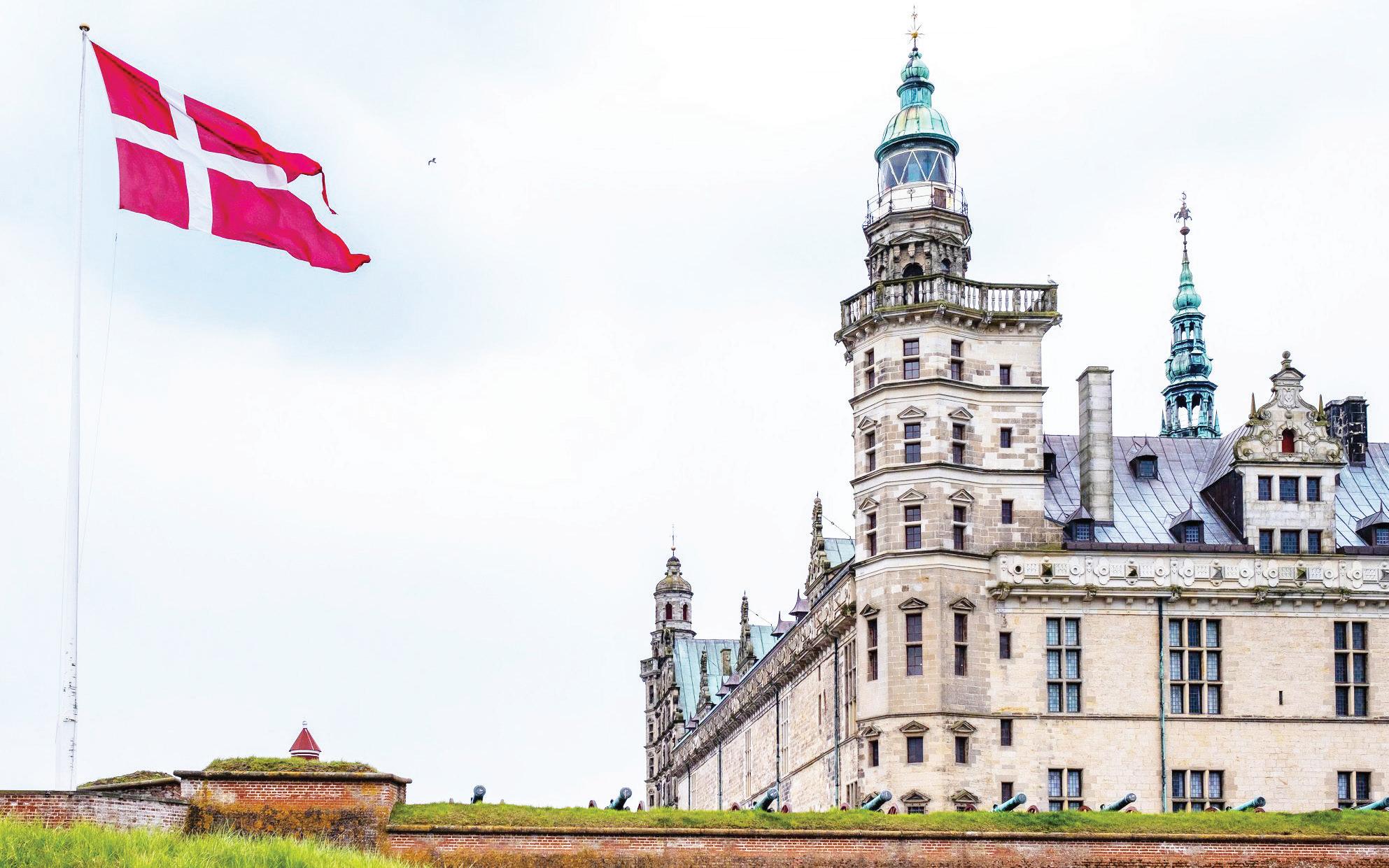
Here, at the closest point, the Swedish coast is just 4km away.
In the 1500s, international relations were a little frostier than today, and the Swedish-facing side of Kronborg was bristling with artillery.
Nevertheless, in 1658 the Swedes invaded Kronborg, ransacking it of art and other valuables. In response, the very-pissed-o Danes built huge new ramparts and a more advanced line of defence – which can still be seen today – and Kronborg became the strongest fortress in Europe.
The site has done various stints as a prison, royal residence and military base. It’s about as majestic as classic Danish architecture gets and is well worth a day-trip as one of the three (technically ve, but two are in Greenland) UNESCO world heritage sites in Denmark.
To be or not to be Incidentally, it’s also the setting of Shake-
Knuthenborg Alle 1, Maribo; open daily 10:00-17:00 until Oct 23; under-12s: 195kr, over-12s: 289kr, under-3s free adm, online discounts available; knuthenborg.dk
Open since 1969, Knuthenborg Safaripark is the largest of its kind in northern Europe, spreading over an area of 660 hectares.
Along with the large areas in which the 1,000+ di erent species of animals stroll around freely, the site also has a large amusement park, an old manor house, a castle, informative exhibitions and activities.
Top tip: don’t miss the tiger area where you can see them up close and personal!

Dinosaurs and other prehistoric beasts are also a focus – in fact, there is even a Dinosaur Park. But don’t worry, an eccentric millionaire’s not going to accidentally release the velociraptors.
Nevertheless, if the thrill of mixing with the wildlife appeals to you, you can book an overnight stay in a tent on an elevated terrace two metres above ground-level, from where you can observe animals walking around below you.
If all that livestock whets your appetite, why not enjoy a delicious gourmet meal with a view of the savannah.
Tickets, including family passes, can be bought online.
speare’s Hamlet, though Horatio’s description of the view from Kronborg – which “puts toys of desperation into every brain that looks so many fathoms to the sea and hears it roar beneath” – paints a bleaker picture than modern visitors can expect.
Today, the castle is home to special exhibitions, the latest being ‘Jim Lyngvild’s Royal History at Kronborg Castle’, which runs until November 14. Visitors can catch the royal retrospective, explore the rooms, complete with original furnishings, and wander the wind-battered military grounds.
If you dare, descend below the castle into its network of gloomy tunnels that house the famous statue of sleeping warrior, ‘Holger Dansk’. Legend has it he will awaken when his country needs him. (Lena Hunter)
Inaugurated a decade ago, Skjoldungelandet promises an epic day out in the spiritual home of the Vikings
Did you know that there is a national park waiting for you to discover it, just 30 minutes by train from Copenhagen!
On 11 December 2012, Ida Auken, the environmental minister at the time, announced that eight years of e ort campaigning had nally paid o for the municipalities of Roskilde, Lejre and Frederikssund, as Skjoldungelandet had been o cially granted state approval to become Denmark’s fourth national park – and the rst in Zealand (in 2018 it was joined by Kongernes Nordsjælland National Park, but that is more of a trek to get to!).
The region − which encircles Roskilde Fjord and encompasses ancient glacial valleys, atmospheric marshland and royal hunting forests − was selected as much for its contribution to national history as for its landscape.
Indeed, most of Denmark’s signi cant archaeological nds of the last 30 years have been made in and around Lejre, a village of central importance to the Skjoldungelandet area.
The name Skjoldungelandet refers to the descendants of Chief Skjold, also known as the Scyldings, who are believed to have been a ruling family around the time of Harald Bluetooth, just prior to Denmark’s conversion to Christianity. Some have even posited that the Scyldings were the rst kings of Denmark.
According to legend, King Skjold was the son of Odin, the supreme Viking god and ruler of Valhalla. While most historians have dismissed his existence as a myth, recent archaeological nds have added strength to those who believe Skjold did actually exist – and that he lived and ruled in Gammel Lejre, now nothing more than a small, sprawling village some 16 km west of Roskilde.
Lejre, which means ‘camp’ in English, was certainly a more important place 2,000 years ago than it is now. From the ancient standing stones to signi cant artefacts from the Bronze and Iron Ages and Viking times, archaeological digs in the area have unearthed plenty of evidence of its central role in Denmark’s past.
Starting around 30 years ago, when archaeologists discovered the remains of several large Viking halls believed by their size to have belonged to a powerful elite, excavations have
also revealed a burial ground marked by stone ships and, most spectacular of all, a tiny silver gure of Odin seated on his throne.
The 2cm-high silver sculpture was discovered in 2009 inside the remains of a 50m-long Viking hall − the largest of its kind in Denmark. In incredible detail, the Viking god Odin is depicted sitting on his elaborate throne, Hildskjalf, which was said to give him magical powers that enabled him to see the entire world. On his shoulders are his two ravens, Hugin and Munin, who ew out every day into the world and returned home to tell him what they had seen – just in case the throne hadn’t lled him in on absolutely everything.
Strange as it may seem, this is one of the few Viking era representations of Odin as ruler so far found; most images of Odin as the supreme ruler of Valhalla come from later depictions, modern-day comics or romantic Golden Age paintings. Now on display at Roskilde Museum, the recovery site of this gurine adds further weight to the theory that Lejre was a seat of ancient royalty, but it doesn’t stop there.
In September 2012, a treasure trove was found near the village of Mannerup, near Osted. Named the ‘Mannerupskatten’, the haul con-
sists of several kilos of silver in the form of around 1,500 objects including rings, coins and bullion. The Iron Age treasure is now on display at Roskilde Museum and is believed to date back to between 500 and 400 BC.
Other major historical nds in the national park region include the remains of ve Viking ships found in Roskilde Fjord in the 1960s, which formed the basis of the now world-famous Roskilde Viking Ship Museum.

Eagles were important to Vikings and ancient settlers in Scandinavia, perhaps even revered; it is tting, then, that the area around Roskilde Fjord is also a reserve for the incredibly rare white-tailed sea eagles, who nest on the remote Bognæs peninsula that stretches in a north-eastern direction away from Sankt Hans Hospital.
A visit to Land of Legends Lejre, an open air museum in the form of an iron-age settlement, should invigorate even the most cynical visitor with an elixir of the area’s special magic. On an autumn day, when the early morning mist still hangs eerily a few feet from the ground long after breakfast time, you could quite imagine Beowolf charging down from the other side of the hill.
We have all thought about what it means to be a parent from time to time, but have you ever wondered how our culture a ects the way we view what we think is the right way to parent? In Norway, parents regularly leave children to sleep outside in -20 degree weather, in Belgium children are allowed to drink beer, and in Japan kids ride the metro alone just seven years old. While these behaviours may sound bizarre to us, to these parents they are the ‘right way’.
The implicit ideas we have about the right way to raise children are what Sarah Harkness, a professor of human development at the University of Connecticut, calls ‘parental ethnotheories’. These beliefs are so engrained in us that it is almost impossible to see them objectively.
But what if we could take o our cultural lens for a moment and try another perspective?
What if we could look through the lens of one of the happiest countries in the world for over 40 years in a row and see what they believe is the right way to raise children. Is there anything we might learn? What if one of the secrets to their success was as simple as child’s play?
The land of free play Denmark, the land of Lego and Hans Christian Andersen, is currently the third happiest country in the world (since 1973 it has never been lower than third) and one thing they do di erently is the way their children play. Free play is unstructured and never led by adults. Since its introduction as an educational theory in 1871 it has been considered one of the most important activities a child can engage in.
“Free play is seen as crucial, not optional in Denmark,” explains Dorthe Mikkelsen, a Danish teacher at a fritid skole (free time school) where children are encouraged to free play after they nish regular school. “Play helps children process all of what they learn with
others. It builds empathy, negotiation and skills that are so important for building the child’s self-esteem, not just in academia.”
Scientists have been studying play amongst animals for years in a bid to understand its evolutionary purpose, and one thing they have found is that play is crucial for learning how to cope with stress. Hanging from bars, play ghting, chasing each other and learning how to negotiate are all things that occur in play.
Children practise putting themselves into ght or ight positions and other stressful situations to see how much they can handle, and then they manage how far they will go with it. Play helps children develop coping mechanisms, self-control and resilience, which has been proven to be a key factor in longterm happiness.
Many parents feel lazy letting kids play freely and not programming their days with activities.

But this is contrary to the research backing up its educational bene ts and how the current number one happiest country in the world, Finland, also sees play as a fundamental learning tool for children. Finland happens to be a global leader in education as well. Is it time we took play more seriously?
It’s interesting to consider that Lego, the world’s biggest toy company, was invented by a Danish carpenter in 1932 who watched children play and use their imaginations freely. This inspired him so much that the word Lego is actually a contraction of the words ‘leg godt’, which when put together means ‘play well’. Even then, Danes knew that being able to ‘play well’ was a building block for a future empire of happiness.
Like the internationally-loved Lego blocks, learning to ‘free play’ seems like a parental ethnotheory worth importing.
This article was rst published in May 2018
Free admission for kids






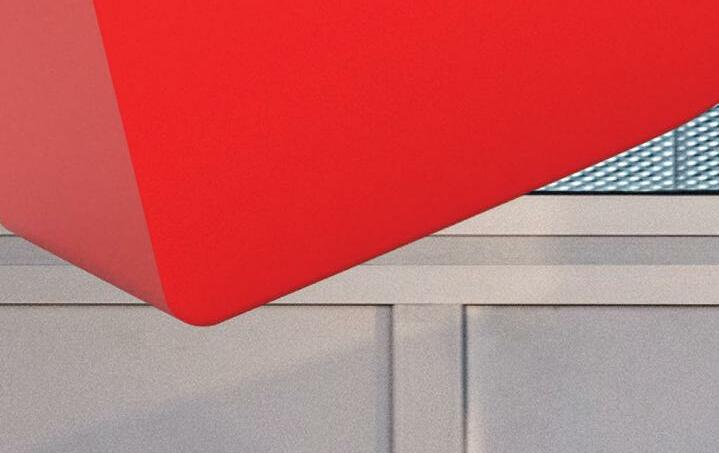







the whole family to exhibitions, creative workshops and great food throughout the fall break



